Day 6
Starting the day at Crewe, I had planned to travel in style, with breakfast on the 0733 service to Cardiff on the train many know as Gerald (the daily Welsh Assembly-sponsored service from Holyhead to Cardiff, worked by a Class 67 and several coaches).
Some 22 travellers are waiting on Platform 12 for ‘Gerald’ to arrive from Chester when (ominously) the departure board time begins to slip back. First 0734, then 0740… 0750… 0758.
For the first time on this trip I have company, with an old friend and lifelong railwayman joining me for the day. He receives confirmation via a phone call that something is wrong… ‘Gerald’ has hit an obstruction outside of Crewe.
Finally, Gerald limps into the station. Fitters try to repair a damaged cable that has knocked out the central door locking, but to no avail. The train is cancelled, and we miss sampling the train’s famous hospitality. Maybe next time...
A hastily cobbled-together ‘plan B’ sees the pair of us leave Crewe on Virgin’s 0829 Pendolino, non-stop to London Euston. I bag seats in Coach C. This contains the shop and the train manager’s office, so it’s effectively the nerve centre of the train, making it a great place to pick up on gossip and watch people.
A walk-through of the train shows it is about half-full, with a complete cross-section of the travelling public, including the obligatory stereotypes. Loud business man constantly wittering into his mobile? Check! Students with feet on seats? Check! Elderly couple with plastic lunchboxes? Check.
I peruse the internal condition of the train. All toilets are working (and odour-free), while the saloons and vestibules are clean and in good order. When you consider the distance the Pendolinos have travelled since introduction, they’re looking good. Rejoining my companion I plug in my laptop and try the WiFi – it’s fine, although a tad slower then I remember.
Passing Nuneaton, I espy more investment. The new 1km-long North chord that will allow freight to bypass the station is really taking shape. Earthworks appear complete, and track and signalling is being installed. It’s another sign of the importance of intermodal traffic (the fastest-growing sector) to both the railways and the wider economy.
As we speed south along the West Coast Main Line, passing a procession of freight and local services, my thoughts wander to discussions around High Speed 2, and those who claim the line is expensive and isn’t needed.
My train is a capacity-eating non-stop service from Crewe, which the HS2 detractors always seem to ignore when they talk about distances. Just imagine how stopping service patterns can be improved when these move to the new high-speed line.
Flying through Rugby at 125mph, I remember working here on Christmas and Boxing Day, during the infamous blockade. We spent £9 billion to raise speeds by 15mph on a line that will be full by 2024, yet some people claim HS2 is expensive!
As I ponder both time and miles speed by, and open countryside and cotton-wool clouds give way to housing and industry as London looms. The countryside fights back in places, such as at Watford and Willesden Junctions, where buddleia continues to lead Network Rail a merry dance!
Arriving at Euston, we sprint to St Pancras to catch an East Midlands Trains service down the Midland Main Line, worked by a refurbished Meridian (in this case a former Hull Trains unit, 222101).
EMT has refurbished its entire fleet in recent years, and the Meridians look very smart. The Stagecoach livery really suits their lines, and the red seat mocquette gives them a bright vibrant feel without burning out your eyeballs.
On departure I log on to the WiFi (which remembered me from an earlier session). It’s reasonable value at £4 for a flexible three-hour session, although I do wish all the companies would offer a decent free service.
En route though London we pass a selection of mucky Eurostars and even dirtier First Capital Connect Class 319s and 377s. FCC has a serious problem keeping its trains either clean or graffiti-free, and they’re more reminiscent of the shabby BR era trains than a privatised railway that has really raised its game. They certainly get my vote as the worst-kept fleet on the network.
There are no such worries with my train, so we hold our heads high as we cruise past the motley collection of cars and lorries on the M1 around Hendon. I resist the childish urge to pull faces at them, and check out the rest of the train instead. It is a well-loaded service - clean throughout, and a pleasure to travel on as far as Bedford.
As we wait on the platform, a series of FCC units berths, before returning towards London. Bedford is currently the northern limit of electrification, and the wires peter out just past the station.
But that’s all set to change - just a few weeks before my trip the Government had given the go-ahead for an £800 million electrification scheme that will see the overhead lines extended to Sheffield. It is yet another scheme that makes you appreciate exactly how much of our rail network will change in the next few years.
Waving au revoir to Bedford aboard another (equally clean, smart and tidy) Meridian, we retrace our steps to London, stopping at the extended platforms of Luton Airport Parkway - a station that obviously delivers a lot of business to the railway.
We pick up so many people that the train manager is compelled to use the PA system to guide people to the few empty seats in the rear cars. Despite the obvious popularity of EMT services on the MML, I can’t help smiling at the fact that it’s one of a number of franchises that receive ‘revenue support’ from the DfT!
We eschew the Tube, and take a taxi to one of the capital’s less popular stations - Marylebone. The place has actually seen an explosion in capacity, services and passengers since the dark days of the 1980s, when it was proposed for closure (and a mad plan to convert it to a coach station). Now, more than 13 million people use the station every year.
Despite all this, the station retains a lot of its late-Victorian atmosphere. You can almost imagine Sherlock Holmes striding off a train, deep in thought, as he makes his way to nearby Baker Street.
However, my visit isn’t about the past, but the future, and the chance to sample Chiltern Trains’ new plug-door Mk 3 coaches used on its ‘Mainline’ branded services.
A smart-looking five-coach rake, complete with Driving Van Trailer and Class 67, pulls into Platform 1. My initial impression is positive, but close inspection quickly reveals flaws. Major surgery is needed to fit the plug doors, and I have to say the quality of the work leaves a lot to be desired.
The roofline above the doors has been cut away, and replaced with the sort of fibreglass bodge-job that a back street garage would be ashamed of. No attempt has been made to match the original, and it doesn’t look as if much care has been taken to re-profile the roof ridges - they’re awful!
And it’s not just on one vehicle either - the same impression is given when walking into the saloon. The attractive colour scheme hides a mass of niggles and poor finishing: blue masking tape left in the light wells, live wires dangling below the table fittings, internal trim that must have been cut by the same person who did the roof. I’ve never seen anything like it.
More surprises are in store when we pull away. I had expected that the new plug doors would improve the internal noise levels, but my decibel meter records the highest range fluctuation of any train I’d been on - from 65 up to 106.1dBa at several points.
Closer inspection of the vestibules revealed more problems. The door control equipment has meant luggage racks have been sacrificed, leading to a space shortage with passengers piling up suitcases on empty seats or under tables. The doors from the vestibules to the saloons are missing, which has the potential to create noise and heating issues.
I visit one of the toilets to find it in an awful state, with a broken Dyson hand-dryer stuffed with a mass of paper as a stop-gap! To make matters worse the wash hand basin isn’t deep enough to bath a mouse, so water splashes and soaks the floor when you use it.
My disappointment is compounded by a visit to the buffet, where there is no price list displayed and consequently no idea of what is on offer. Moreover, the coaches display the classic Mk 3 problem with air-conditioning, which has failed in two of the coaches.
I could go on and mention the soaking vestibule carpets, where rain has penetrated the gangways, or the gangway doors that seem to have a mind of their own, or many of the other niggles I find. In all the years I’ve been writing these articles, I can honestly say I’ve never been as disappointed in a ‘new’ train.
We decide to abandon it at Leamington Spa, to catch a Chiltern Class 168 on a later train. I’ve always enjoyed travelling on Chiltern, and use its trains regularly, but I can’t help wondering if standards and attention to customer service haven’t slipped. The cleanliness of our unit isn’t brilliant, and when the conductor finally comes through, he makes no effort to check tickets. Instead, he ineffectually asks the coach if anyone wants to buy one.
At Birmingham Moor Street we make up for our disappointments with lunch at the Centenary Lounge - a lovely cafe with a GWR period feel, friendly and attentive staff, a wide range of food and drinks, comfy seats, free WiFi and seating on the station concourse. I always try to pop in when I’m passing through, as it’s an ideal place to kick back, observe life on the station and enjoy watching the world go by.
Suitably fortified, we brave the building site that is Birmingham New Street, and catch a Virgin Voyager to Wolverhampton. It’s not particularly busy, but entertainment is provided by a young lady opposite who spends the whole journey expertly applying the entirely contents of her (not inconsiderable) make-up bag!
At Wolverhampton we make a brief stop to visit another old railway icon - the Great Western pub, which is hidden in the back streets behind the station. Formerly the haunt of many a thirsty railwaymen and postie, it’s only the latter you’ll find nowadays, although there is still plenty of railway memorabilia decorating the bar, as the former low level station is only a stone’s throw away.
Continuing north I catch another Virgin Voyager to Carlisle, my final destination of the day. Although some people dislike them, I’ve never really had any problems with the Voyager family. They can be awkward when crowded, but so can any train. The underfloor engines certainly don’t bother me, as you soon learn to tune them out.
My particular train is busy, but seats are available, so I set up my laptop and settle in for the ride. It’s already dusk, so I won’t be able to enjoy the wonderful landscape north of Preston, but on this trip I am more interested in the staff.
The winner of the new West Coast franchise is due to be announced in the morning, so I want to chat to staff to see what they think, and they respond, without reservation.
The consensus is that they are happy and proud to be working for Virgin, and fear the changes that First Group might make. They have seen what happened to CrossCountry, and worried that cuts will be made to onboard services… and to staff.
It is clear to me that First will have a major problem replacing the powerful Virgin name. People are proud to be linked to such a glamorous international brand, but First Group is no Virgin, and staff saw it as little better than a bus company.
I do my best to calm their fears, by pointing out that some First franchises are very well run and staff seem happy. I wish them all the best when I leave the train at Carlisle, without telling them what is already known to parts of the industry. They’d find that out the next morning…
Day 7
As expected, the morning’s breakfast TV is full of the news about Virgin losing the West Coast franchise, but you wouldn’t know it from the demeanour of the Virgin staff at Carlisle. They go about their jobs as if nothing had happened.
It is only when I catch a Voyager to Edinburgh, and mention the change to the young lady in the shop, that the fears I’d heard yesterday are repeated. I can only commiserate and wish her well.
Although the news comes as no surprise, it still feels odd to think this could be my last time writing about Virgins trains. They had offered some great service over the years, providing a constant on the changing franchise map… until now.
Putting aside my thoughts on franchises, I enjoy the scenery along the Scottish borders up to Edinburgh, where I step out into yet another enormous building site - Waverley station, where Network Rail is busy on a £130m refurbishment and extension programme.
Now I know what it must have felt like under Ena Sharples’ hairnet! Waverley’s roof has vanished under masses of blue netting and scaffolding, leaving passengers to pick their way through the gloomy maze and clutter below, in a powerful example of the difficulties faced when builders and passengers have to co-exist.
I stay long enough to get shots of the work before taking my leave on a ScotRail Class 170 for Dundee. Since I last caught one, they’ve been fitted with fast, simple to use (and free) WiFi. They’re also comfortable and fast, making them very attractive trains.
Now you can share with people in real time, via Twitter or Facebook, your awe at crossing the Forth rail bridge (I know I did). Sadly the Fife weather is less then awesome, and it is almost impossible to see the nearby road bridge through the fog.
It is the same along the coast, although stations such as Ladybank and Leuchars provide attractive diversions. The latter has a huge bank of solar panels atop its canopy, which makes me wonder: how many more stations could deploy such technology?
The gloomy weather remains with me all the way across the Tay, where we cross the magnificent bridge to the journey’s end in Dundee, terminating in one of the two bay platforms.
The roof over the single island platform is a rather impressive Victorian structure, and the station’s buildings are a mix of old and new. Traditionally Scottish is the station bar, which offers ‘Plonk Du Tay’ on its wine menu. It’s a bit of a time warp, and the sort of establishment where you don’t pick your drink up off the bar… you unstick it.
Resisting the temptation to explore Dundee’s new waterfront developments, I catch the next train further north to Aberdeen. In contrast to my earlier train, this is a busy service filled with a gamut of people, from groups of weather-beaten oil rig workers through to students and old ladies.
The route itself is one of the last two remaining semaphore signalled main lines (and the only 100mph one?), holding the title jointly with the Great Western Main Line in Cornwall. It has the feel of a traditional main line, as many stations still have signalboxes, semaphores and yards full of sidings - making it well worth a visit before the inevitable happens and resignalling arrives.
Students of station architecture will also enjoy places such as Lauencekirk, an attractive Aberdeen Railway station building dating from 1849 that was closed in 1967. This wooden building lay derelict for decades before being restored and re-opened in 2009. And it has become a roaring success, doubling the projected 36,000 passenger numbers in its first year!
The route to Aberdeen is also remarkably scenic, although the stunning sea views where the line hugs the coast are rather lost in the gloomy weather, which lasts all the way to Aberdeen. The ‘Granite City’ is the third largest in Scotland, and its economic importance is sometimes overlooked by us ‘Southerners’ (although I doubt many First Group employees forget that’s where their company is headquartered).
Aberdeen station reflects the town’s importance. The huge 21-span glass roof over the light and spacious concourse is impressive, but I am in for an even bigger surprise when I step outside.
In years gone by I remember running the gauntlet of incontinent seagulls that perched atop every lamppost, but now Aberdeen’s station front has been incorporated into a covered plaza for the Union Square shopping and entertainment complex. It’s another great example of how the railways have become integrated into people’s everyday activities - you step straight off the train into shops, cinemas or restaurants.
This is the furthest north I get on this trip. I retrace my steps as far as Dundee, where I follow the bank of the River Tay as far as Perth. I have come here to admire another superb example of station architecture - the work of the English architect Sir William Tite, who designed many other railway stations (including Carlisle).
Perth remains a junction, but services have contracted considerably, leaving a station that’s miles too big for its current role. It makes for a sad sight, dwarfing the two-car and three-car DMUs that skulk in its lengthy platforms.
Between trains it’s eerily quiet, so it’s easy to imagine what it must have been like in its heyday, with multitudes of station staff and passengers bustling around long trains heading for the Highlands, the empty footbridges teeming with people, and the station buildings alive with tearooms and offices.
Now the noise comes from the cooing pigeons that have found their way through the swathes of pigeon netting protecting the overall roof. The only human presence is a chap in the ticket office and a pair of bored teenagers slumped in the uninviting cafe in the modern entrance building.
I just wish a role could be found for such stations, restoring the vibrancy and relevance they once had. I know Network Rail (and in England, ACoRP) try hard, but I suspect Perth’s location on the edge of the town centre isn’t going to make it easy.
The station livens up when my onward train brings dozens of Glasgow commuters home, and there is momentary confusion as the train crew (who think their two units are to split) are told the service will stay together, leaving me the sole passenger in the rear ‘158’ for the trip back to Dundee!
I have come back this way to test my decibel meter, and try out the WiFi on an East Coast HST. By now the gloomy weather has broken, and we are treated to a good old-fashioned deluge that highlights one of the drawbacks of Mk 3 stock - the gangways flood as water pours in through the seals!
The weather has broken by the time we cross the Forth bridge, treating me to the sight of ships lit up like fairground rides, set against the dying rays of the sun that have pierced retreating storm-clouds - a gorgeous sight.
Back at Edinburgh, I fight my way through the scrum to catch a Class 334 EMU to Glasgow. It seems odd to see one of these Strathclyde PTE-branded units, as they never used to appear in Edinburgh, but they have become regular visitors since Airdrie-Bathgate was electrified.
This is the route I have come to sample, using the busy 2121 to Helensburgh Central. The Scottish Executive has invested £375m to create what is now the fourth route between the two cities, and it’s an impressive project (for starters it involved doubling the Bathgate branch).
The new stations are all substantial places, compliant with the latest disability regulations - with footbridges and lifts, CCTV and PIS systems, as well as plenty of car parking to encourage drivers to stay out of the cities and commute by train instead.
Bathgate (the former terminus) is especially impressive. Lots of people leave the train here, and I can see by the sheer volume of vehicles that it is well used. In contrast, the EMU stabling sidings are virtually empty - also a good sign.
Each time I visit north of the border on one of these trips, the Scottish have come up with an exciting new project for me to visit - and long may it continue!
Saying goodbye to my final train of the trip at Glasgow Central Low Level, I make my way upstairs into another railway cathedral, and Scotland’s busiest station. There has been no major transformation here, although the station has gained two new platforms, ticket gates and resurfacing of existing platforms.
But there has been one rather special transformation - that of the old Central Hotel, which forms the station’s frontage. Once it was one of Glasgow’s most prestigious hotels, and the haunt of stars such as Frank Sinatra, Roy Rogers and Laurel and Hardy. Sir Winston Churchill even maintained a suite here. But by the 21st century it had become very down at heel. I stayed here during my 2006 trip, and remember it as scruffy and rather rough.
Now a £20m refurbishment has restored it to its former glory (and four-star status), with wonderful features such as ‘Champagne Central’, a luxurious circular lounge with domes and marble columns overlooking the station concourse. My stylish bedroom pays homage to its roots, with rail-inspired art as part of the decoration. After a week exploring the network, it is a fantastic place to end my trip, and I can thoroughly recommend it.
As I lie down to sleep I reflect on the week, and the massive investment that I have seen going into our nation’s railways. As someone who’s been exploring them for over 42 years, I can honestly say that there’s a new spirit surrounding the industry.
The railways are no longer seen as the butt of jokes or some anachronism irrelevant to the modern age - exactly the opposite, in fact. They’re seen as vital to our nation’s future. Let’s just hope that new ‘railway age’ continues, and my Senior Citizens railcard will be valid on HS2!


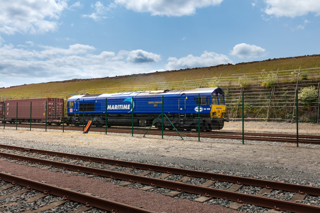
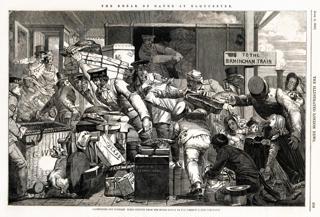
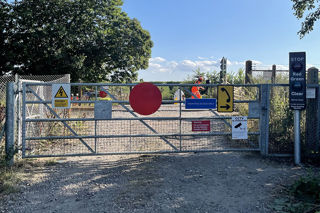
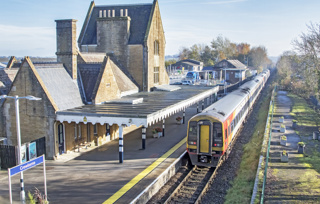


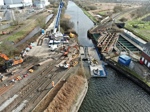







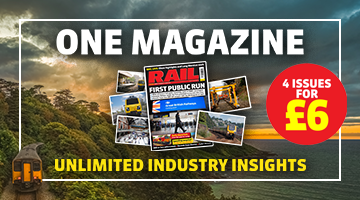

Login to comment
Comments
No comments have been made yet.